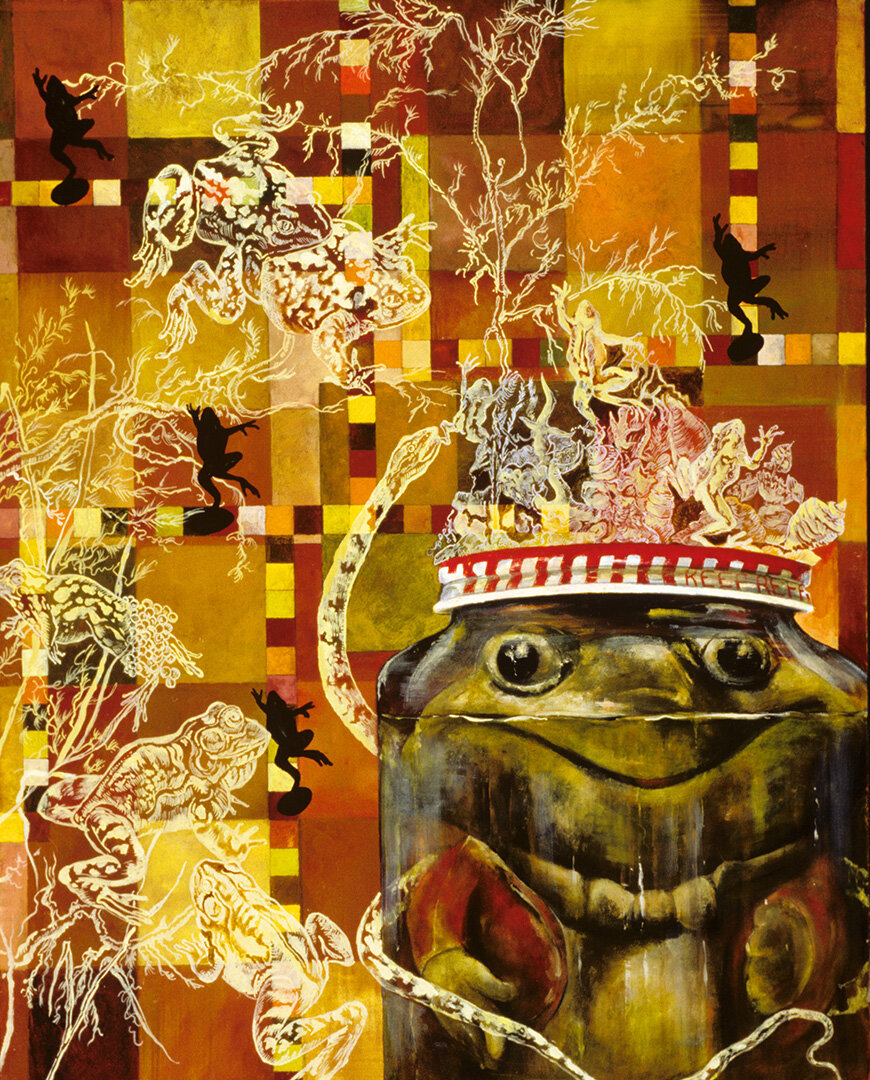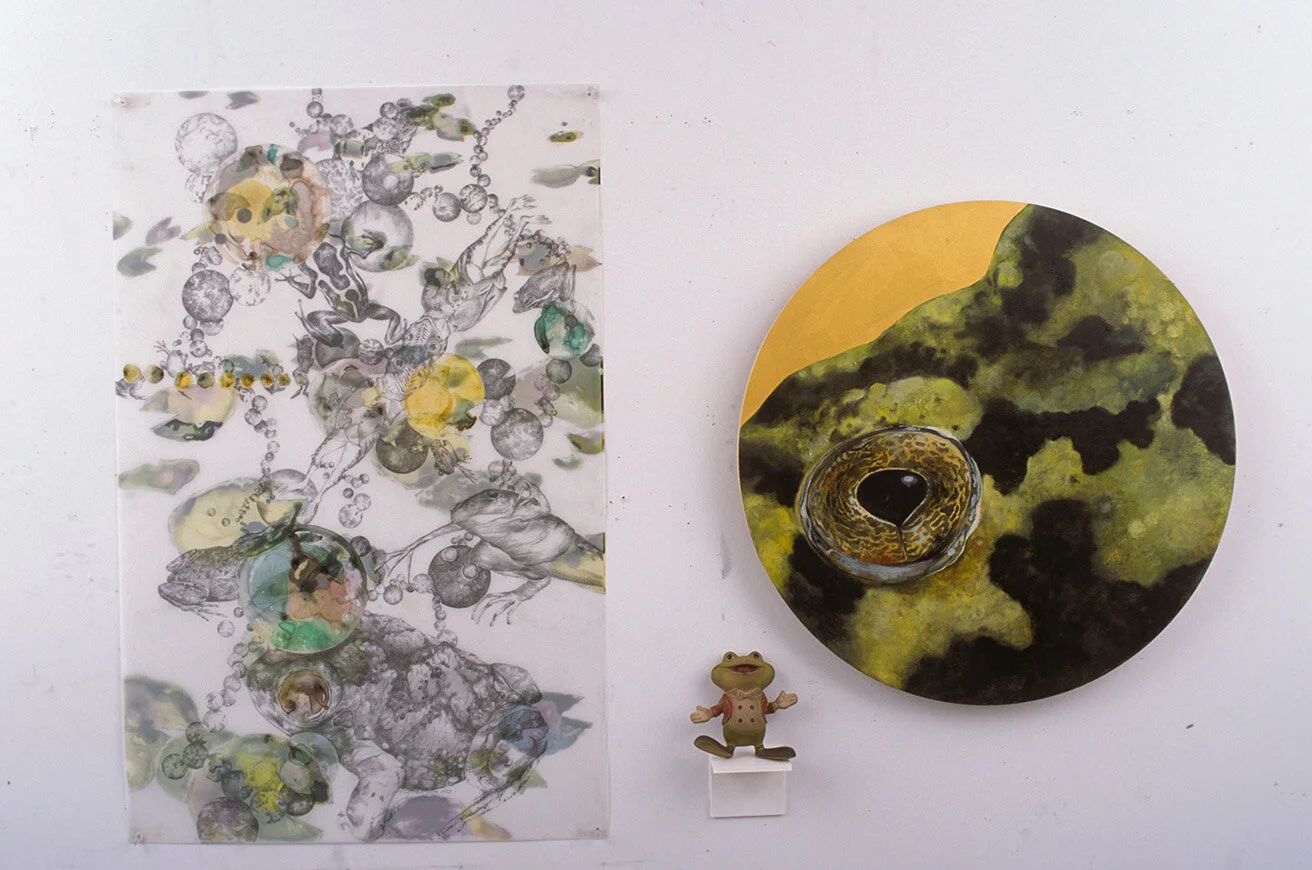Work 1994-2002
Simian Sensibilities/Frogs/ and Games 1994-2002
Simian Sensibilities
Here is a statement I wrote for exhibits of paintings and drawings at Weekend Gallery, Houston, Texas in 1996 and 1997:
“The toy monkeys, who so willingly modeled, sit again on their shelf in my home. Dusted and clean after their time in the studio, they look down with varying, odd attitudes. I look back and question them; the conversation between us is ongoing. The toy monkeys in these pictures are limited by what we as humans have prescribed for them. Whether they run about on wheels, become unstuffed, wear a Jocko uniform, or are contained in an old work sock, they are our surrogates. We have constructed them to fit into our social context. The separation between us (human primates) and them (apes, monkeys, etc.) perhaps becomes even closer than the one gene that separates us from the pygmy chimpanzee as we study these toys. The ‘missing link’ is bittersweet. A link that suggests loneliness, lost and found memories and a private investigation into the past and future of our relationships to other species.”
Frogs
Sequentially, the second body of work in this period focused on frogs, as I depicted them on mylar -- a plastic film originally used by architects for drafting. I explored our relationship to this species by, first, studying how they were rendered in historical drawings, and second, using biological specimens (embalmed or dried), in the works themselves. At the time new information was emerging linking the disappearance of many frog species to climate change.
Games
The third body of work in this period examined the paradoxical relationships cast into game boards. The following paragraph is from a Davis Gallery, Austin, TX statement:
“Marjorie Moore uses the grids, colors, and forms, of board games as the starting point for her investigation of the rules and players of our personal interactions. Characters and pieces are depicted in layers over her paintings as they progress across, and emerge out of, the confines of the game board. She states that she ‘based the underlying patterns in these paintings on reminisces of game boards, but they also document the private world.’ Moore confounds our expectation of the game as an element of popular culture that is childlike in its innocence through her inclusion of contemporary parables as subject matter.”
Pond Collection. 24 x 18 inches, graphite and ink on mylar, 2002
Traveling, a game board. 24 x 24 inches, oil on panel, 2000
Call in the Clowns, a game board. 24 x 24 inches, oil and collage on panel, 2000
Collision Course. 29 x 32 inches, oil on canvas, 1997
INDIA, a game board. 24 x 24 inches, oil and collage on panel, 2000
One of these things is not like the Other#7. 12 x 10 inches, oil on canvas, 1996
Pliny Says. 24 x 20 inches, oil on linen, 1995
Pond Collections. 24 x 9 inches, graphite and ink on mylar, 2002
Pond Games. oil on canvas, 2003
Pond inquiries. graphite and ink on mylar, oil on panel, found object, 2003
Red Howler Skeleton #4. 11 x 16 inches, graphite and prisma…graph paper, 1994
Small Planet. 24 x 20 inches, oil on linen, 1995
Sorry Guys, a game board. 24 x 38 inches, oil and collage on panel, 2000
Transparent Behaviours. 26 x 38 inches, oil on canvas, 1997













